MORE PRUNING?
Showtime Again, Next Year
The main show is over, at least here on the farmden: Spring blooming shrubs and vines have strutted their stuff. With blossoms past, those plants are melding into other landscape greenery. You can’t turn your back on them, though; pruning now will encourage them into repeat performances next year and in years to come.
Many shrubs and vines renew themselves each year by sending up new stems at or near ground level. With age, these stems crowd each other, flower less profusely, and put fragrant or colorful blossoms beyond where they can best be seen or reached with your nose should you want to get close for an aromatic sniff as you walk past.
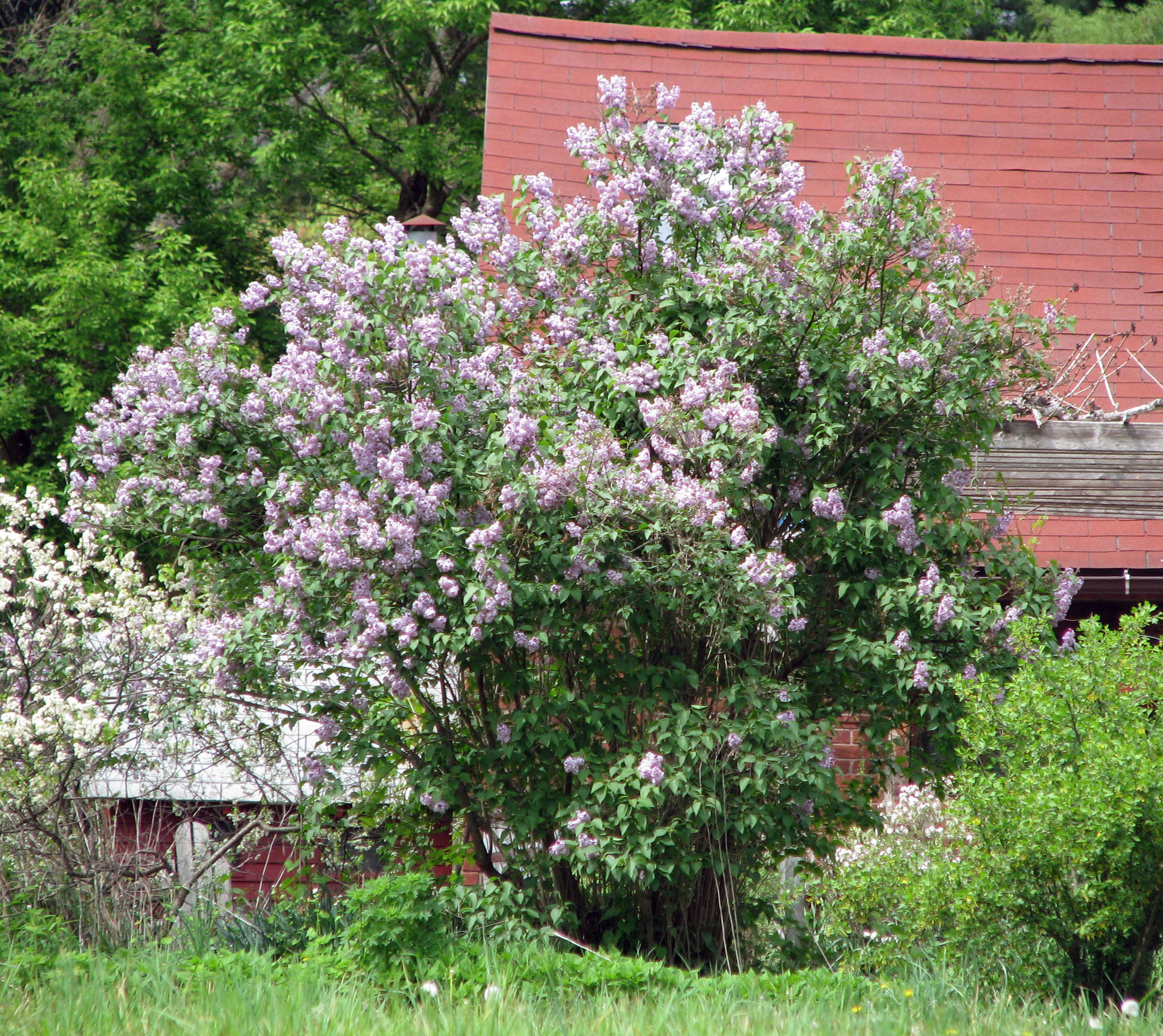
Lilac before its annual pruning
Cutting away some old stems makes way for new ones. Pruning also keeps plants shapely and gets rid of diseased, dead, or broken branches. Pruning spring flowering shrubs and vines right after flowers fade gives new shoots time to grow and bud up this year for flowers next year. Next years flowers are formed in this year’s buds.
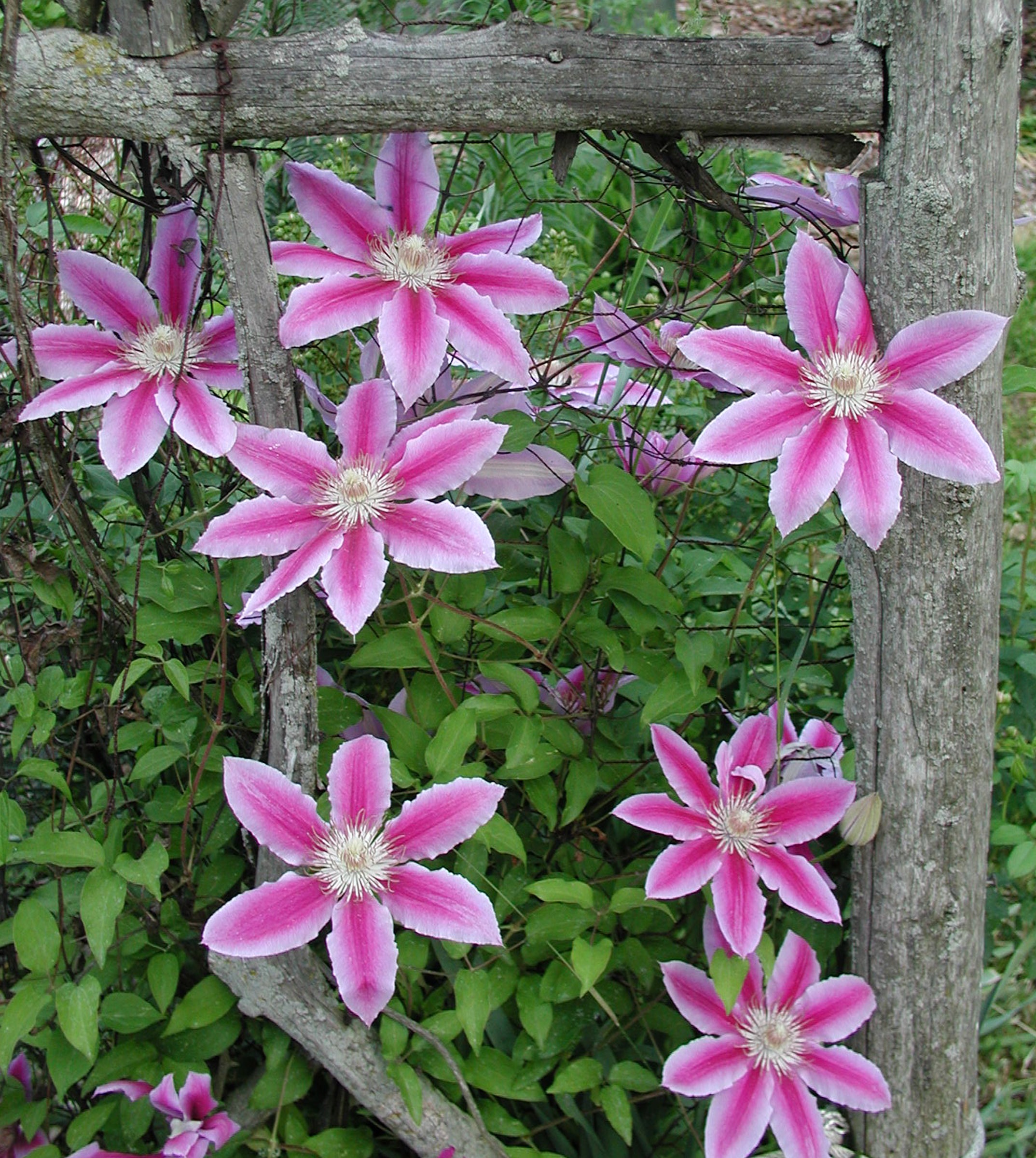
Nellie Moser clematis need only light annual pruning because it bears on both younger & older stems
Vines also need enough pruning to keep them in bounds, which varies from plant to plant. Dutchman’s pipe (Aristolochia spp.), for example, needs nothing more that a light going over with hand shears. At the other extreme is Crimson Star clematis, which flowers best if lopped almost to ground level each year right after flowers fade. Note that this pruning is not for all clematis varieties. Those that bear in late summer and fall, such as Sweet Autumn clematis and the varieties Little Nell and Étoile Rose, are best lopped to the ground before growth even begins, in late winter.
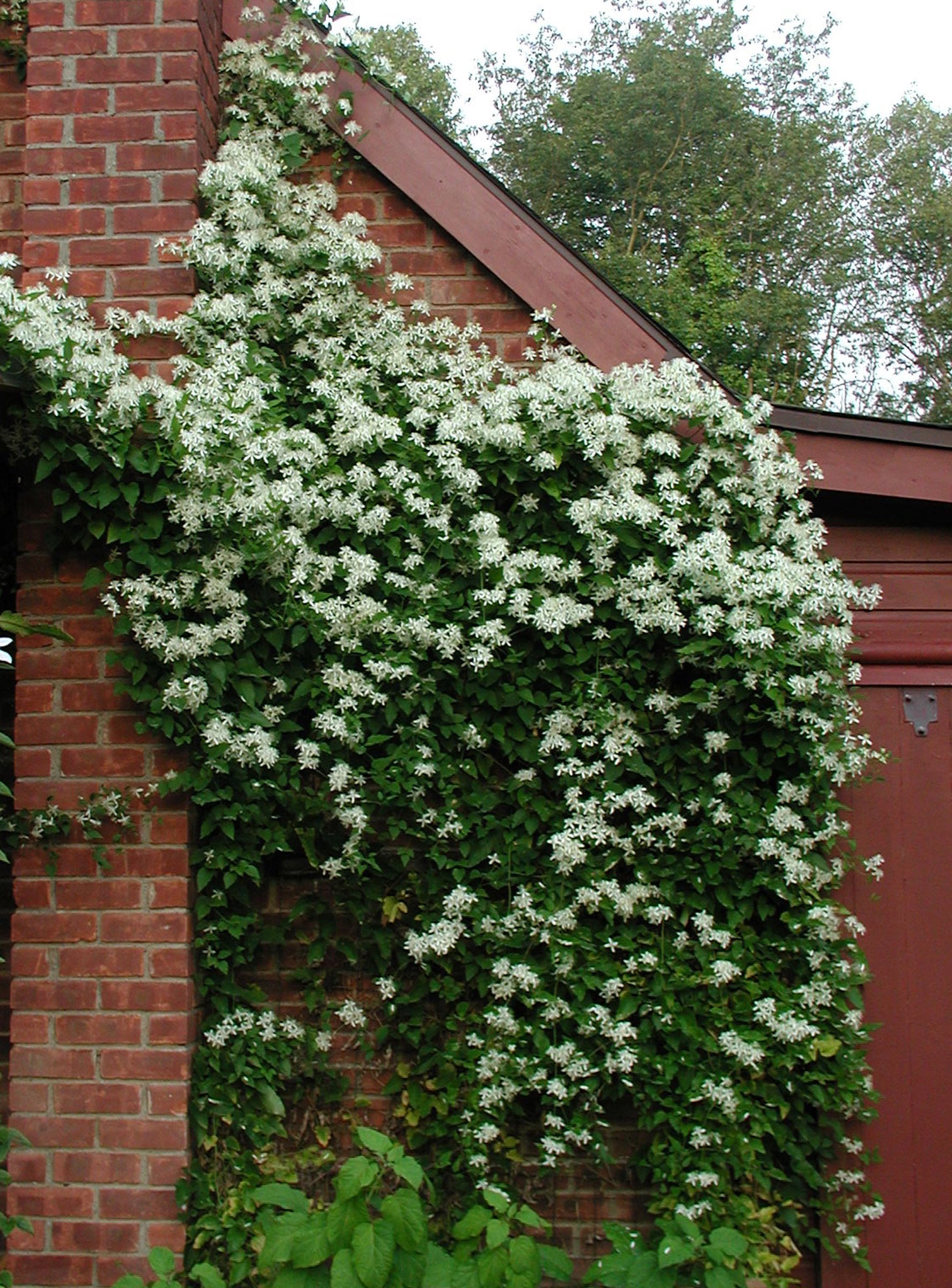
Sweet autumn clematis
Where and How Much
Spring flowering shrubs vary in the amount of annual pruning they require. Those habitually sending up few new suckers at or near ground level — pagoda dogwood and cotoneaster, for example — require little or no annual pruning. If you’re not sure about how much to prune any shrub, watch it grow for a year; the more suckers, the more pruning needed.
Lilac and forsythia are among those spring flowering shrubs that sucker profusely and produce flowers on older wood. I prune them with a pruning saw (if needed), a pair of loppers, and a pair of pruning shears, using the tools in that order as I move progressively from grosser to finer cuts.
I begin pruning by peering in at the base of the shrub so I can find and cut away some of the very oldest stems to within a foot or less of the ground. Unlike the celebrity who can keep up appearances into old age with some surgery and dye, old stems of lilac and similar shrubs lose can’t help but lose their oomph and no longer flower well. Those old stems are the tallest, so these first cuts also keep these shrubs from growing too tall. I selectively cut wood from around the edge of the clump from shrubs spreading too wide at their bases. Over time, French lilacs spread this way; Korean lilacs, such as Miss Kim, much less so.
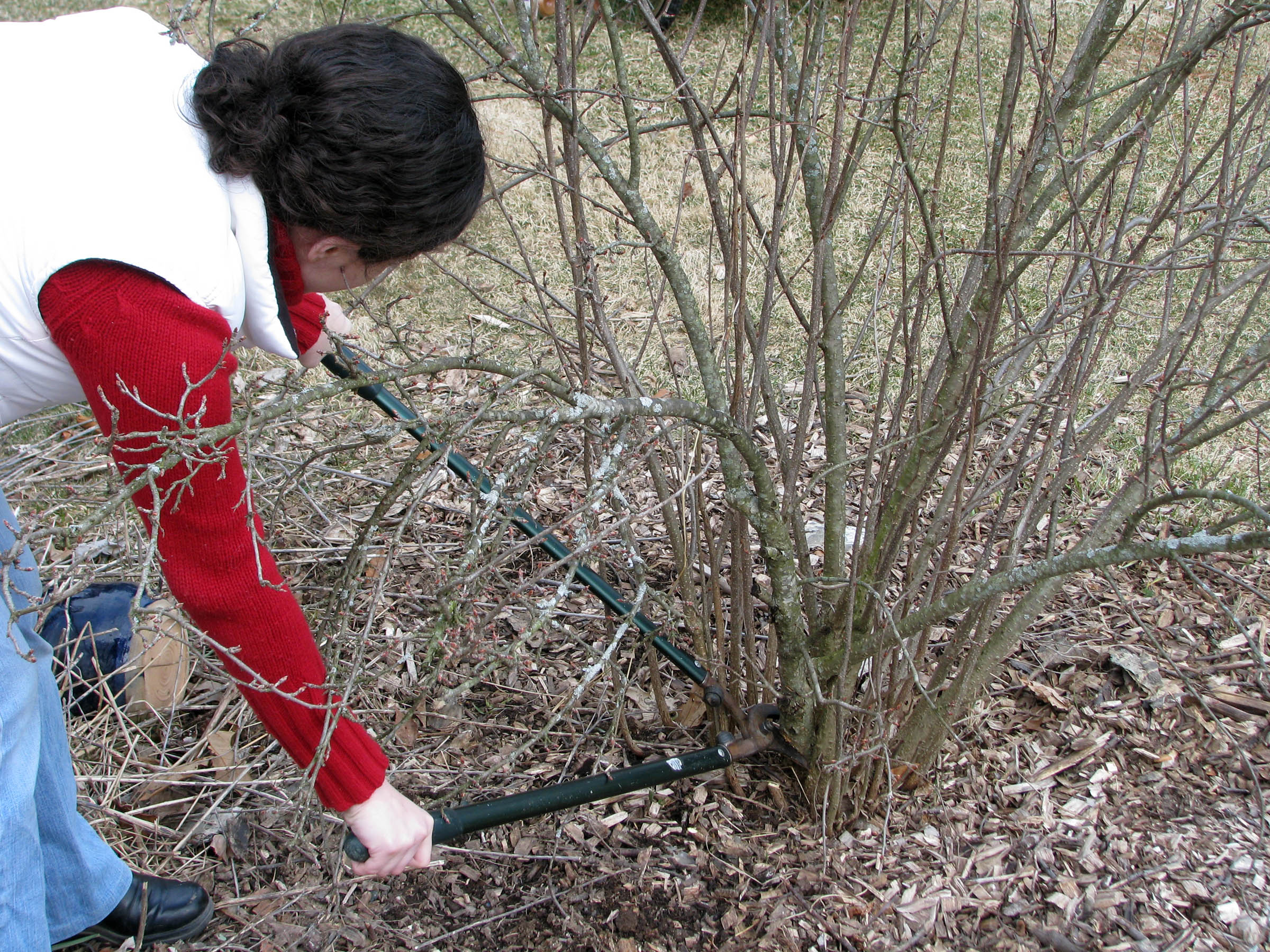
Pruning oldest stems from shrub
Moving on to the youngest stems, the new suckers from last year. There could be lots of them, perhaps too many. Too many left to grow will eventually result in a shrub with too many older stems, so I get down to ground level with my pruning shears and thin them out. How much to thin them depends on how many grew and how long you plan to leave a stem.
And finally, I take my loppers and shorten some of the remaining older stems, cutting back to a vigorous side branch any stem that is too tall or too droopy. I strive to create a shrub with a fountain of blossoms springing up from the base of the plant, rather than forming a sphere.
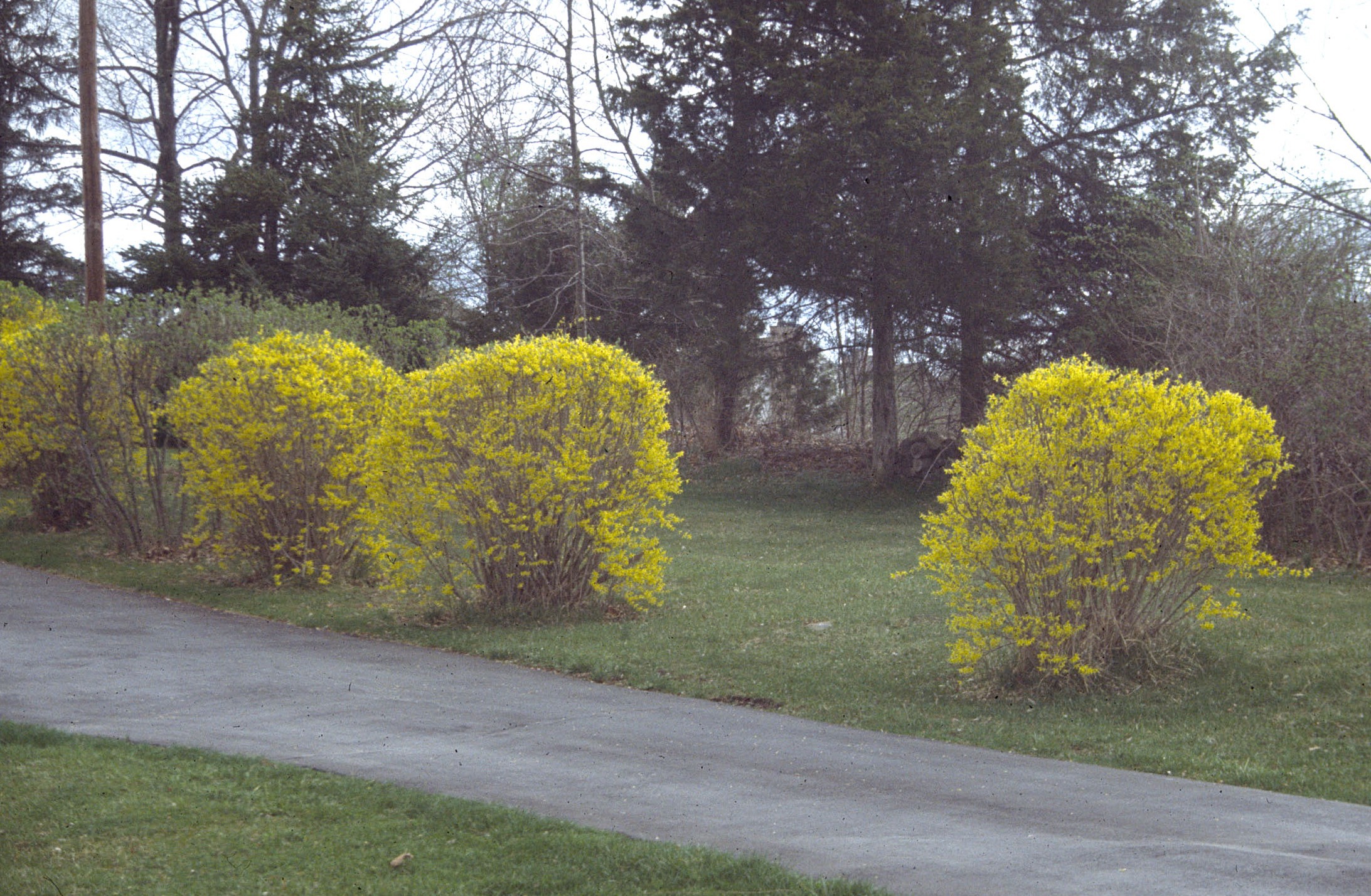
Forsythia spheres
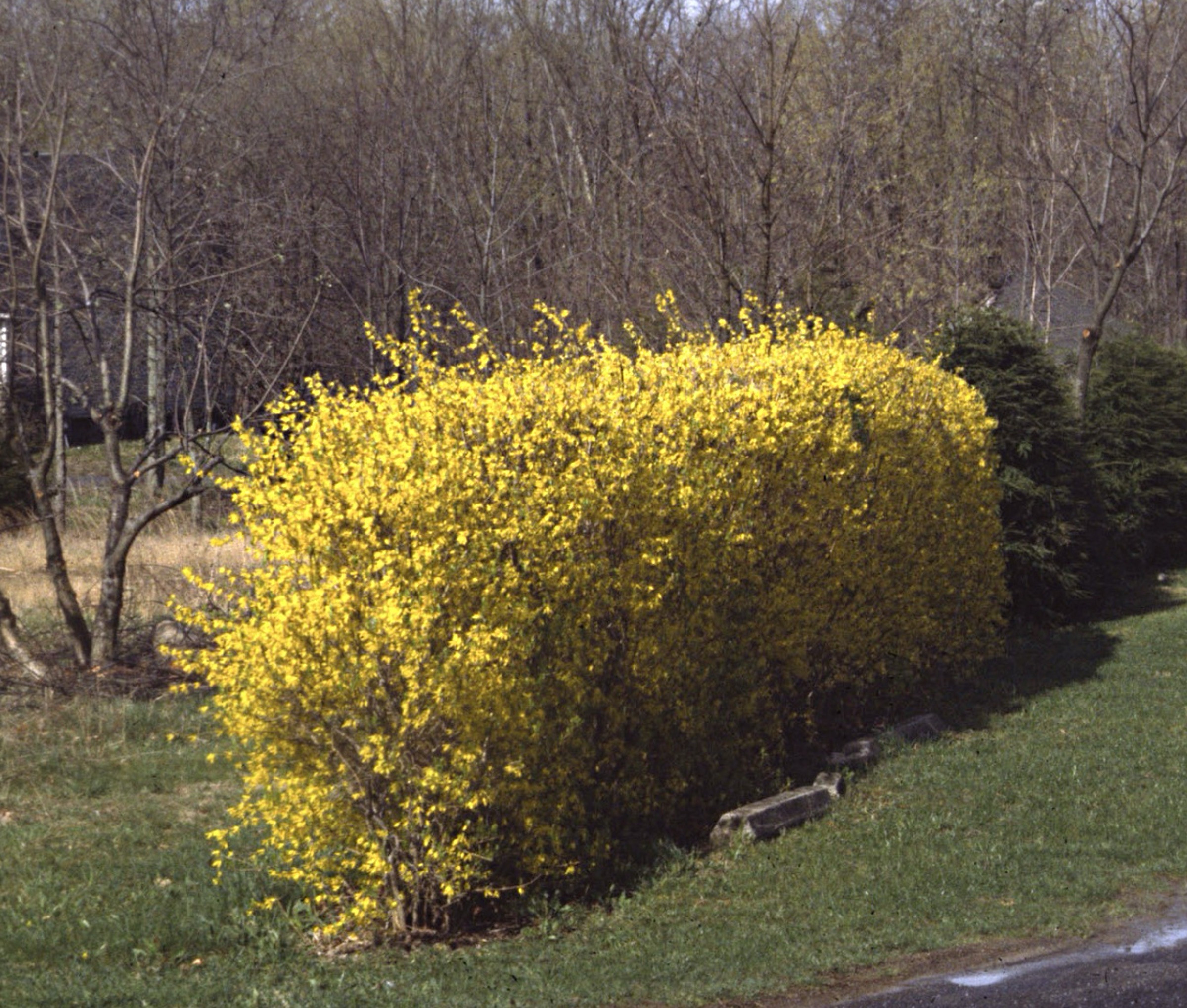
Forsythia, trimmed hedge
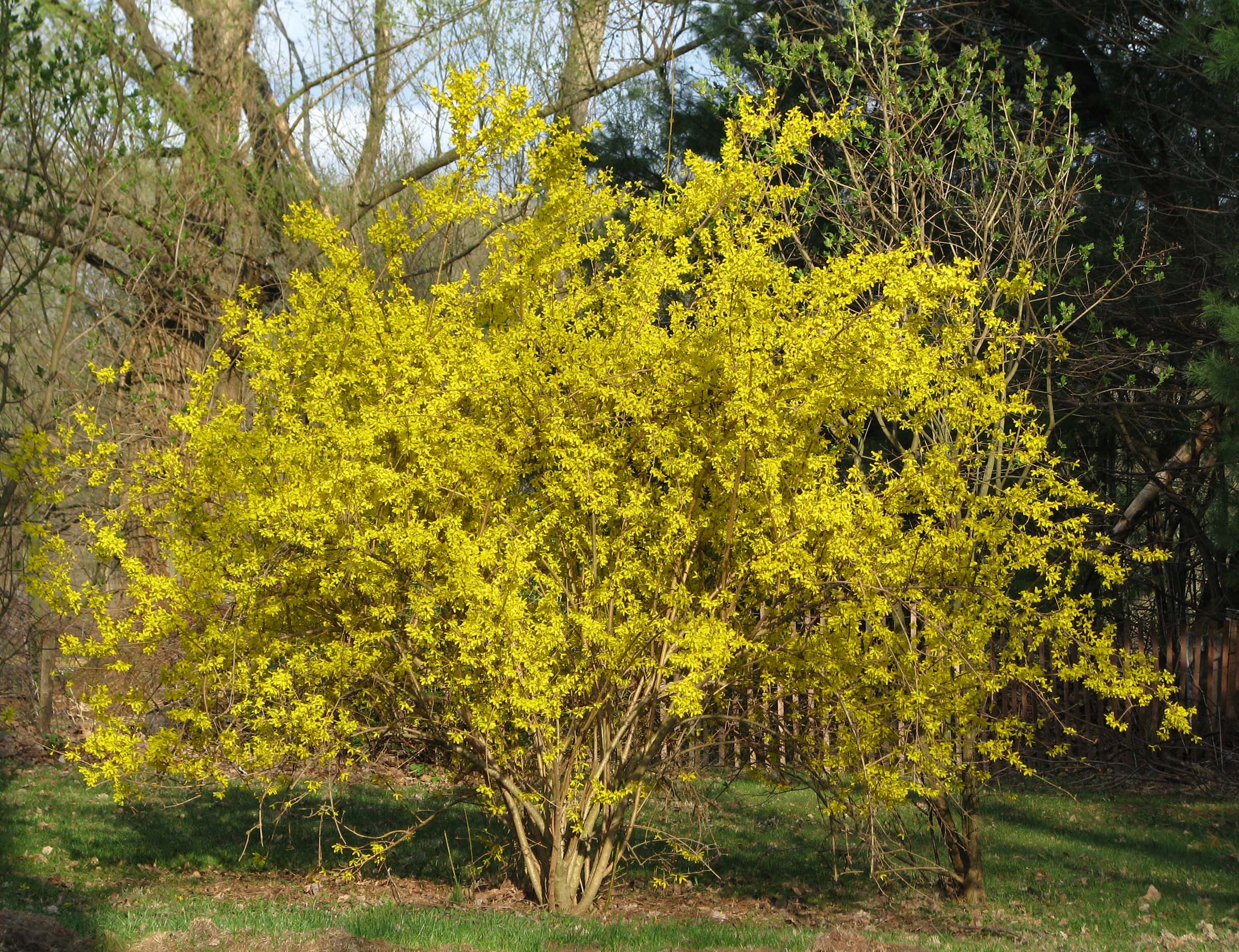
Forsythia, pruned as fountain
How long older stems of a shrub can keep up appearances depends on the kind of shrub. Fortunately, older stems of Pagoda dogwood, cotoneaster, and other shrubs that send up few new suckers each year, flower well for a long time. Lilac and forsythia, pretty long. Flowering stems of Japanese rose (Kerria japonica) and dwarf Russian almond (Prunus tenella) are best lopped to ground level right after flowers fade. The same could be said for other shrubs that flower best on one-year-old stems — suckers — coming from ground level.
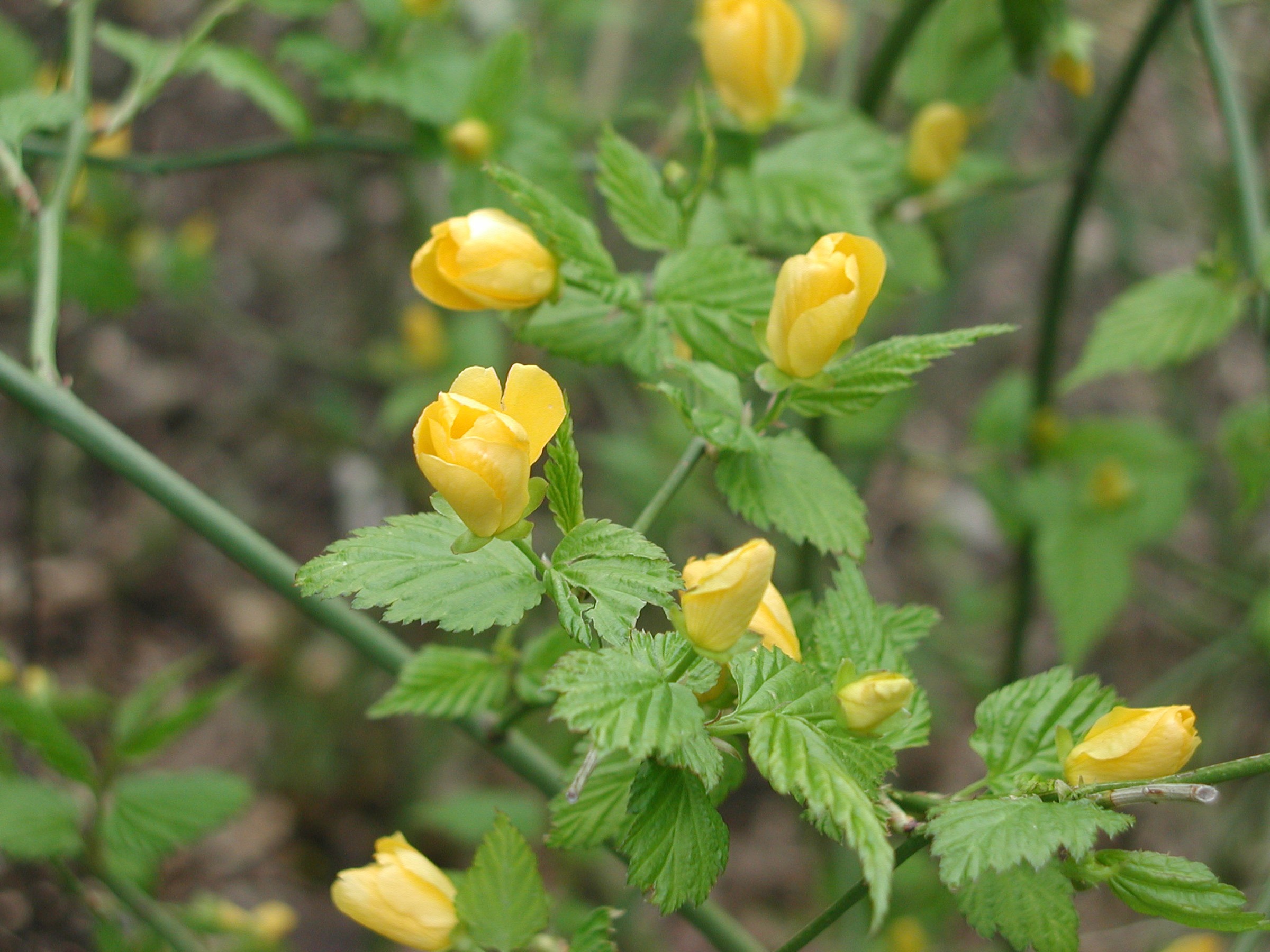
Kerria blossoms; cut the stems to ground level right after flowering
A Pat on My Back
I stop work for a minute, now, and look at what’s lying on the ground. Branches, yes. But just as important, spent flowers are also lying on the ground at the ends of all those branches. Those spent flowers would have developed seeds. Now all that energy that would have gone into developing seeds can be channeled into flower buds this year for flowers next year.
I wrap up my pruning job with detail work, using pruning shears. Any remaining spent flowers are deadheaded, and any small branches that droop too much or gawkily jut out from the top of the “fountain” are cut back.
It’s impossible to give an exact prescription for what to cut. Such details depend on the nature of the plant as well as how high and how wide you want it to grow. There’s art in pruning and, as I prune, step back periodically — just like an artist — to evaluate and admire my work.
(For more details on pruning shrubs, vines — almost every plant — see my book, THE PRUNING BOOK, available from the usual sources or, signed, directly from me at www.leereich.com/books.)

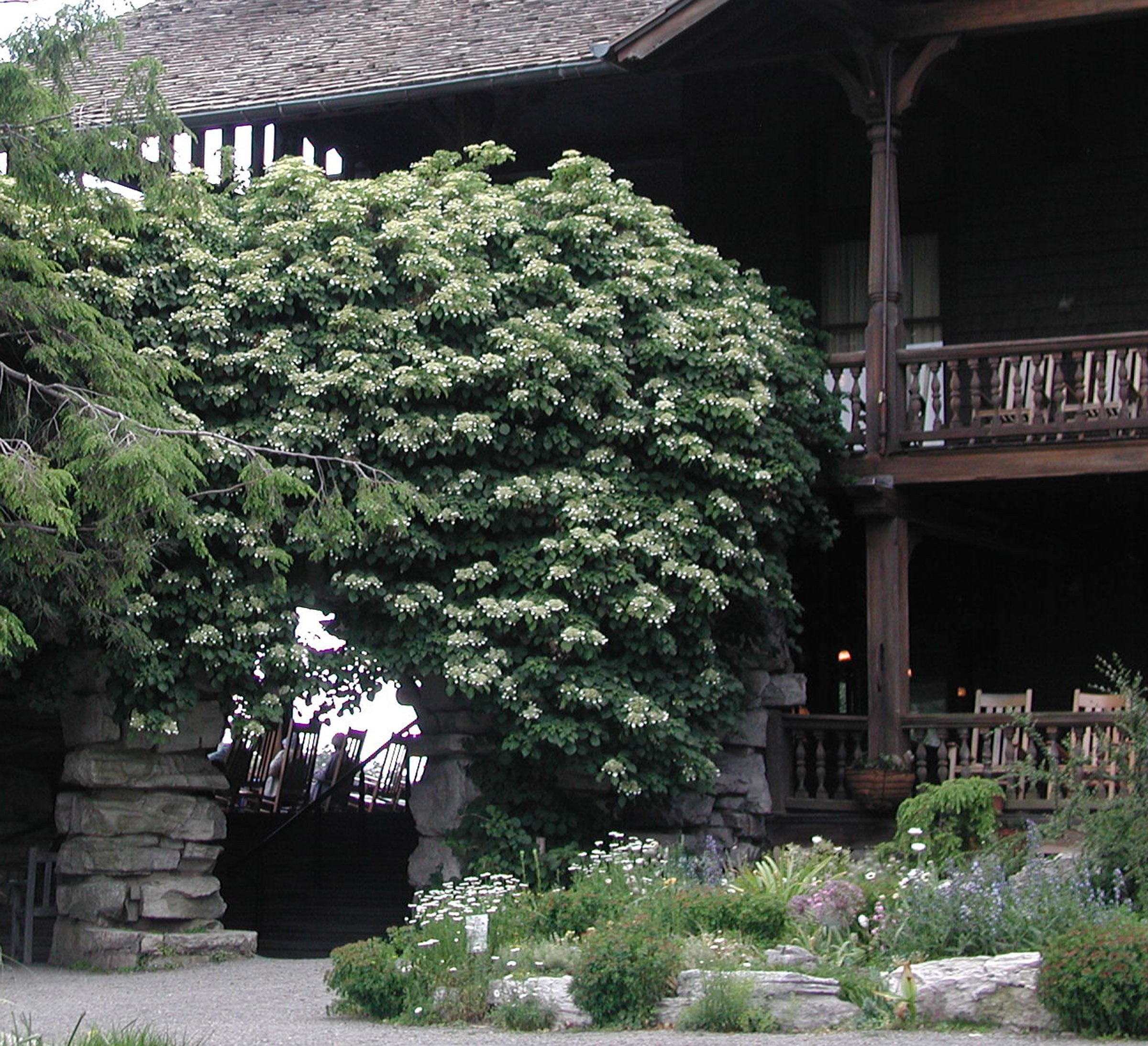

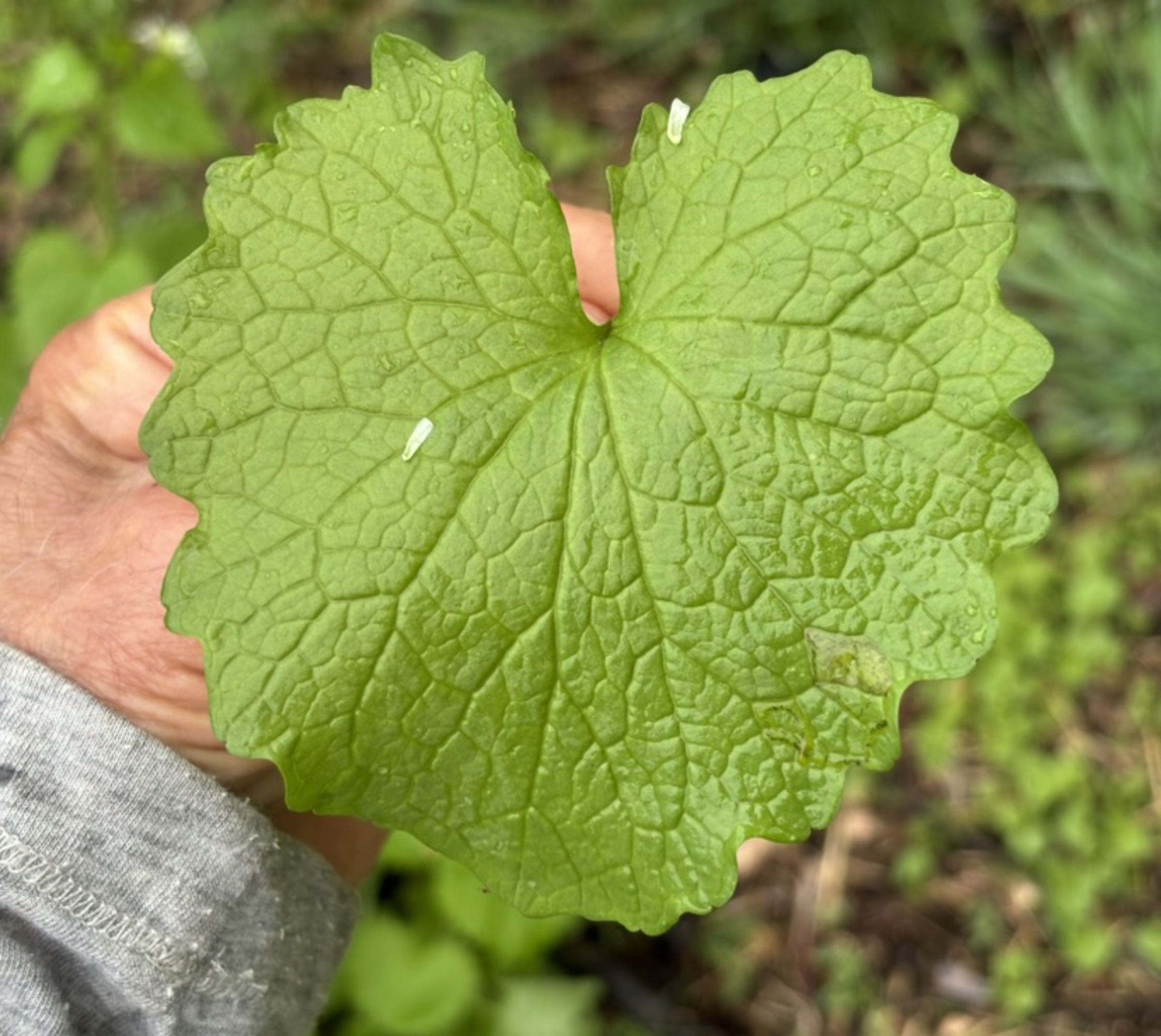

The lilacs seemed (central PA, zone 6a ish) were particularly good this spring. I chalk it up to the snow-covered and more “normal” winter that we had this year, but it left me wondering id & how f I should prune them…. so thank you for the perfecty timed post and information!
Normal down there. Up here many lilacs bloomed in late summer. Also, an abnormal winter, with more damage to plants than I’ve seen in decades.
Yes, prune your lilacs now.